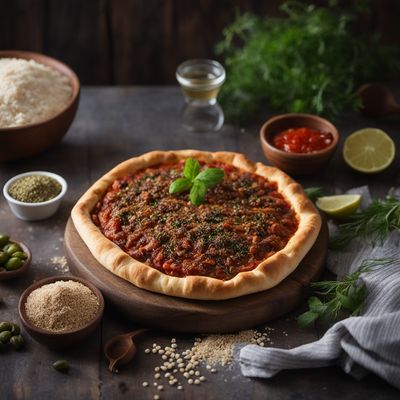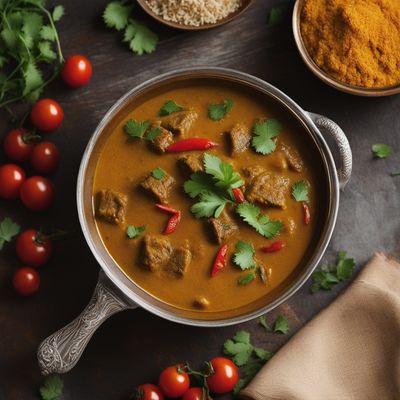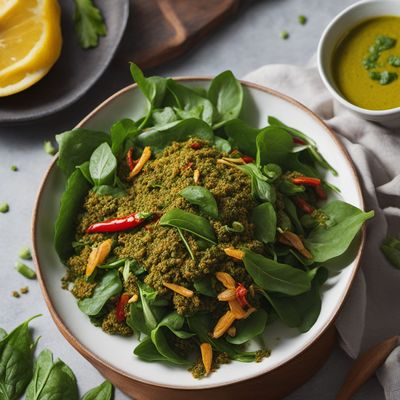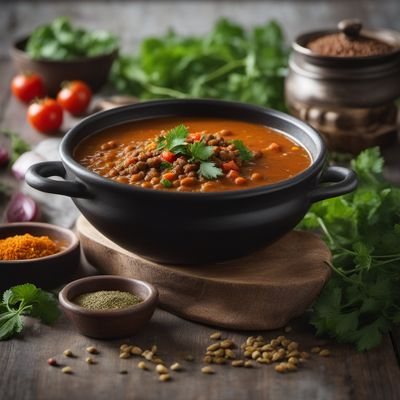
Ingredient
Nigella seed
The Enigmatic Spice: Unveiling the Secrets of Nigella Seed
Nigella seeds are small, black, teardrop-shaped seeds derived from the Nigella sativa plant. They have a slightly bitter and nutty taste, with a pungent aroma reminiscent of oregano. The seeds are crunchy and have a thin, delicate texture. Their appearance is striking, with their jet-black color and intricate, sculpted shape.
Origins and history
Nigella seeds have a long history dating back to ancient Egypt, where they were found in the tomb of Tutankhamun. They were highly regarded for their culinary and medicinal properties and were even mentioned in the Bible. Originating from the Mediterranean region, nigella seeds have been used in Middle Eastern, Indian, and North African cuisines for centuries.
Nutritional information
Nigella seeds are a good source of protein, dietary fiber, and healthy fats. They also contain essential minerals such as iron, calcium, and magnesium. Additionally, they are rich in antioxidants and have been associated with various health benefits.
Allergens
Nigella seeds are generally safe for consumption and are not commonly associated with allergies. However, individuals with seed or spice allergies should exercise caution.
How to select
When selecting nigella seeds, look for ones that are shiny, uniformly black, and free from any signs of moisture or mold. It is best to purchase them from reputable sources to ensure freshness and quality.
Storage recommendations
To maintain the freshness and flavor of nigella seeds, store them in an airtight container in a cool, dark place, away from direct sunlight. Properly stored, they can retain their quality for up to a year.
How to produce
Nigella seeds can be grown in a home garden by sowing the seeds in well-drained soil and providing adequate sunlight and water. However, it is important to note that the plant requires a warm climate to thrive.
Preparation tips
Nigella seeds are commonly used as a spice in various dishes. They can be dry-roasted to enhance their flavor or used as a topping for bread, pastries, or salads. They are also a key ingredient in spice blends such as garam masala and panch phoron. Additionally, nigella seeds can be infused in oil to create a flavorful condiment.
Culinary uses
Nigella seeds are widely used in Middle Eastern, Indian, and North African cuisines. They are commonly added to curries, lentil dishes, pickles, and bread. They can also be sprinkled over yogurt or incorporated into salad dressings for an added burst of flavor.
Availability
Nigella seeds are commonly available in Middle Eastern, Indian, and specialty food stores. They are also cultivated in countries such as Egypt, India, Turkey, and Iran.
More ingredients from this category
Recipes using Nigella seed

Homemade Turkish Ramadan Pide
Savor the Flavors of Ramadan with Homemade Turkish Pide

Oriya-style Chanfaina Curry
Spiced Lamb Offal Curry with Oriya Flavors

Spicy Fish Salad with Local Greens
Tangy Delight: Spiced Fish Salad with Northeastern Twist

Naan-e Roghani - Afghan Flaky Bread
Flaky Delight: Afghan Naan-e Roghani

Achari Jhinga with a Tangy Twist
Spicy and Tangy Achari Jhinga: A Flavorful Delight from India

Uzbek-style Lentil Stew
Hearty Lentil Delight: A Taste of Uzbekistan

Kitcha - Ethiopian Spiced Flatbread
Savor the Flavors of Ethiopia with Kitcha - A Spiced Delight!

Lahori-style Spiced Taralli
Lahori Spice Twist: Irresistible Taralli Bites

Sylheti Stuffed Cucumber Pickles
Sylheti Delight: Stuffed Cucumber Pickles